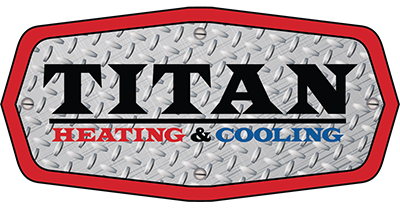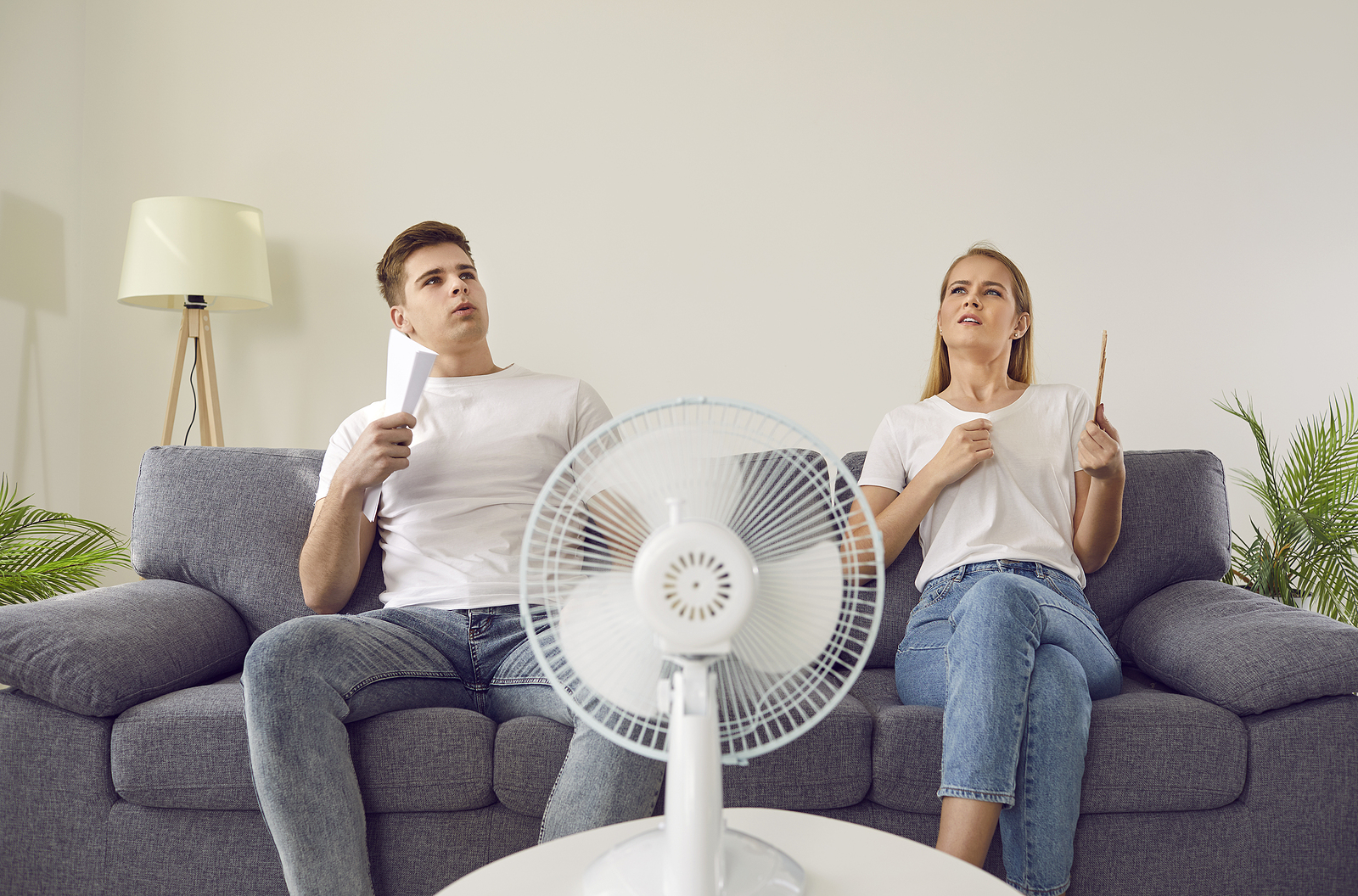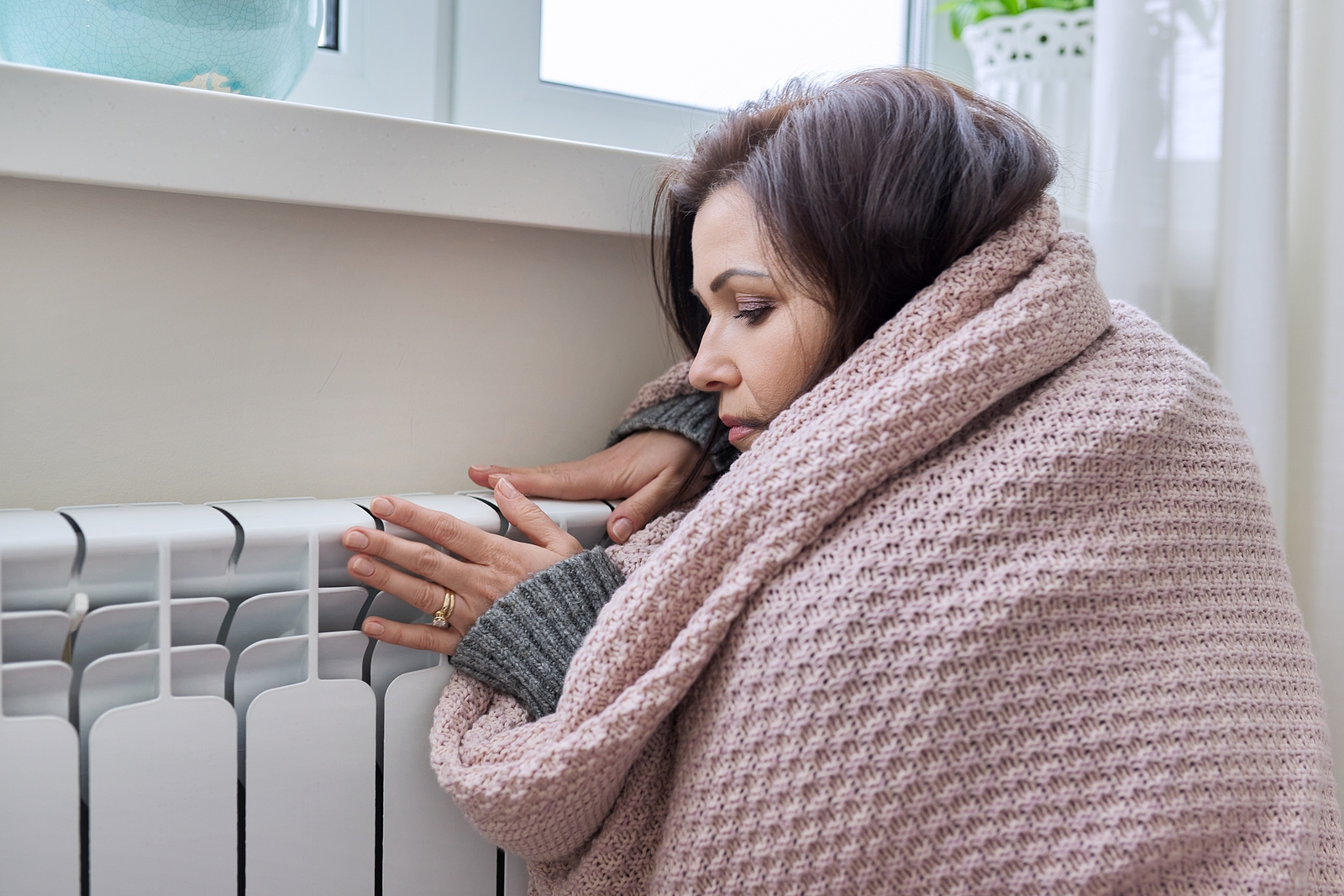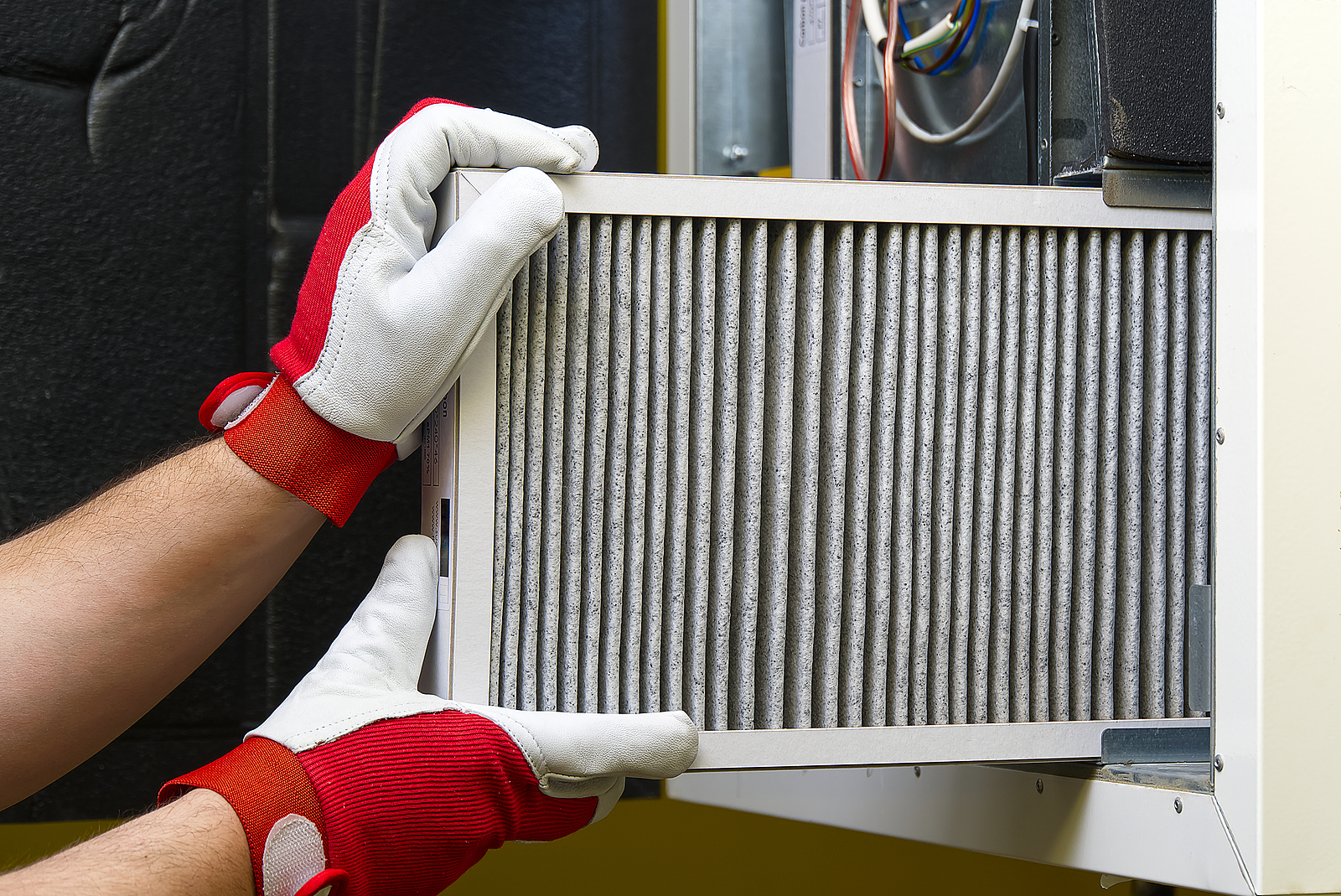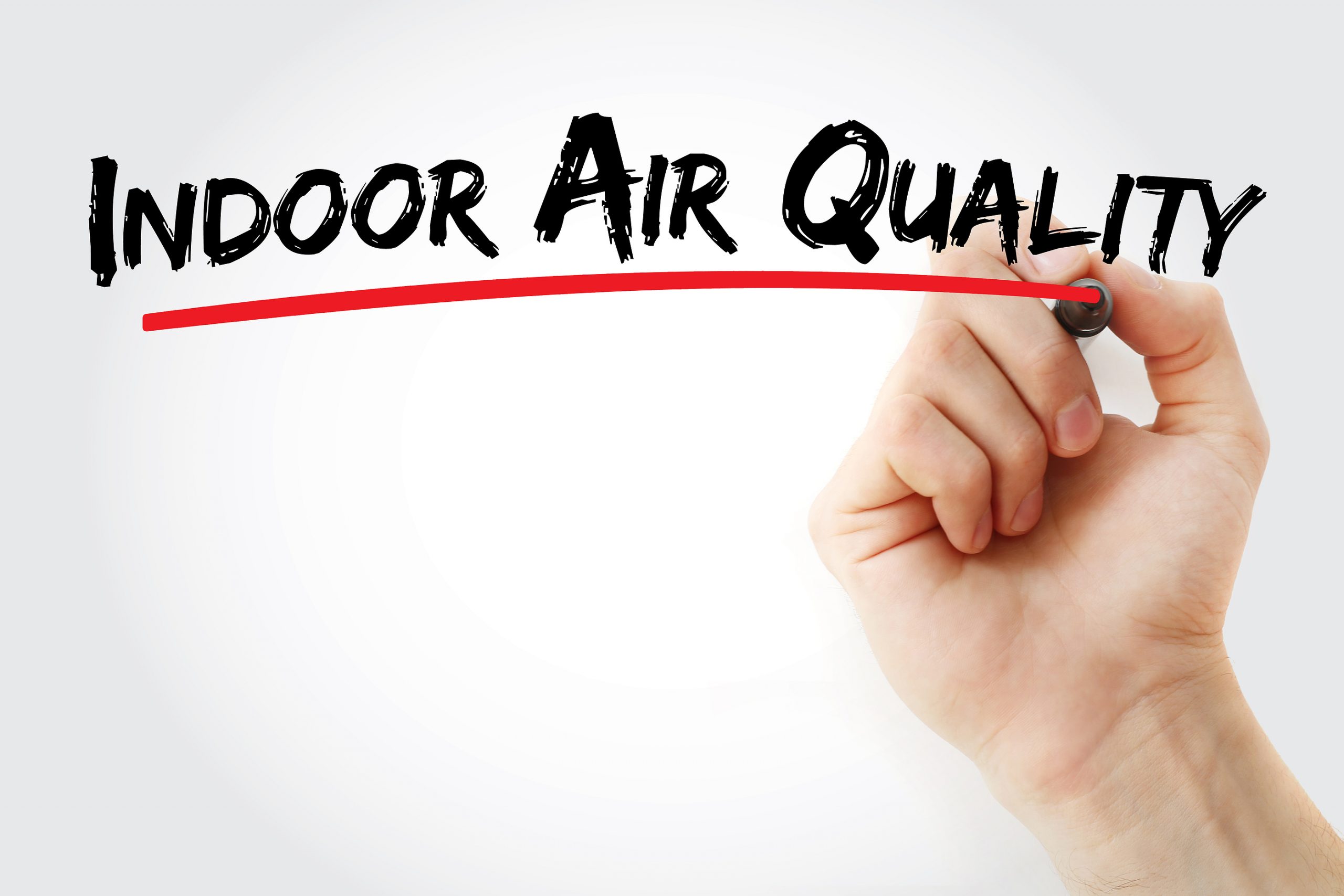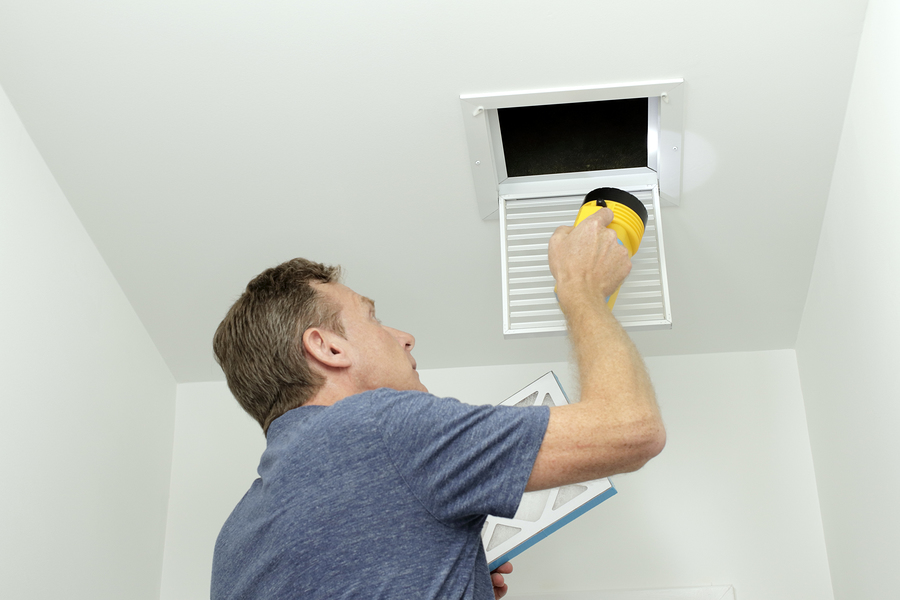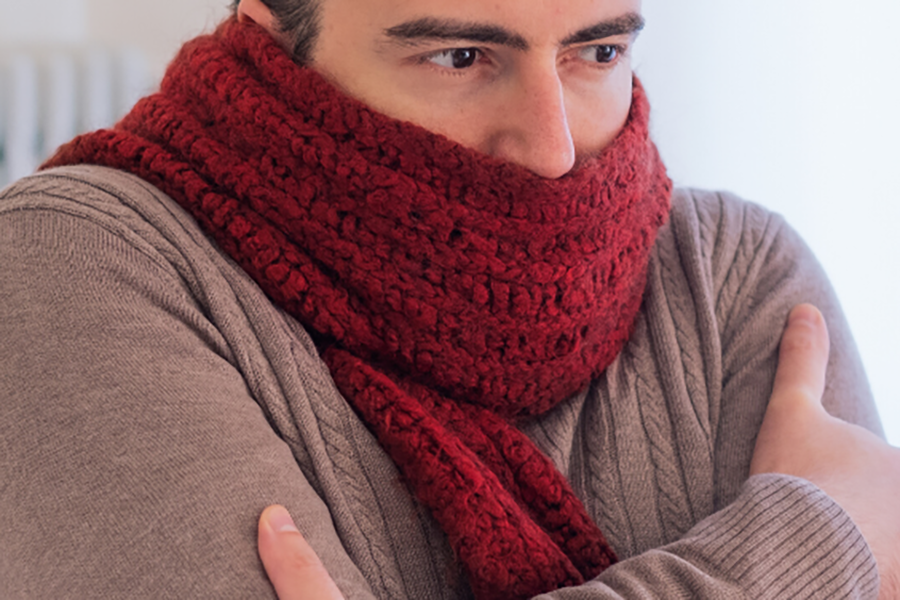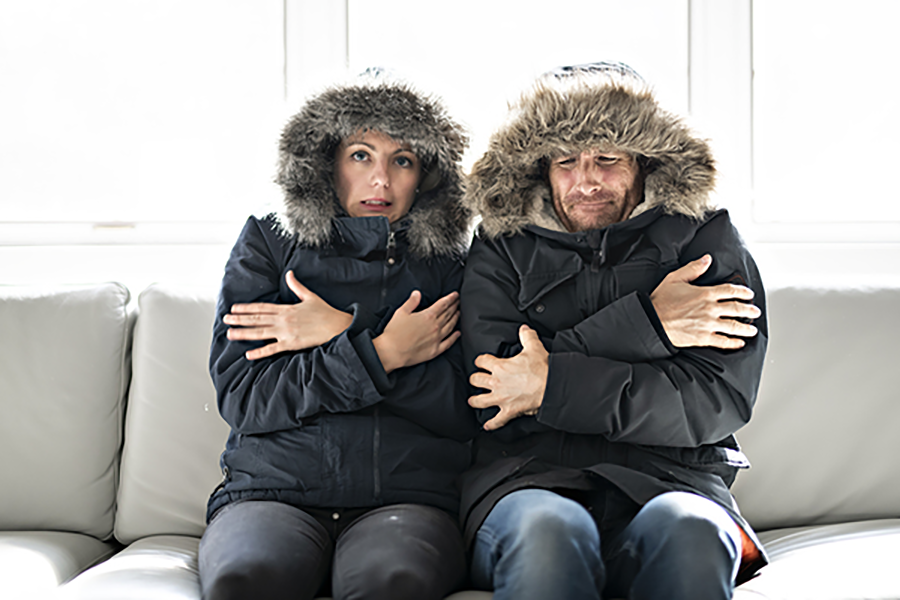We’ve all been there. You set the thermostat to a reasonable 78 degrees, but when you walk into that one particular room–whether it’s your guest room, your office, or if you’re really unlucky, your bedroom–it feels like a balmy 82. So rather than deal with this problem all summer long (like you did last summer…and the summer before that), you’ve decided to research the issue and find a solution. Good for you! You’ve come to the right place. As HVAC maintenance specialists, the crew at Titan Heating and Cooling has definitely heard this question before. And the answer isn’t always air conditioning repair services. In fact, there are several possible reasons why one room is hotter than the rest of the house. Below, we’ve listed five common culprits of a temperature imbalance and offered up a solution for each. Poor Insulation Aside from being hotter in the summertime, is the room in question always colder in winter? If the answer is yes, your problem might be poor insulation. When a room isn’t insulated well, more air is able to escape through the walls of your home, causing your heating and air conditioning systems to work overtime. That also means that in the winter, your heater is warming up icicles, and during the summer, the AC is cooling off your shrubbery. Not a pleasant thought. If you’ve lived at your residence for a while, it might be time to have a professional come conduct an inspection to find out if your home needs new insulation. When a room is properly insulated, it will hold its temperature much better. Windows There’s nothing better than a lovely view, and big windows through which you can appreciate it. But, if your windows are old or poorly sealed, they can easily let air escape from your home, changing the temperature in the room. Even if your windows are brand new, they can still cause issues. Statistically, windows are to blame for about 13% of air leakage in a home. There are a couple of solutions here. If your problem is that your windows are just old, you can have a professional come out and air seal your windows for you, or check out our blog on how to air seal your home yourself. If your windows are brand new, however, consider applying special temperature control window film to them. These films will help stabilize the temperature in that particular room by blocking UV rays from getting into the room and cool air from leaving it. Distance From the AC Is your extra-warm room far from the AC unit? It’s not unheard of for rooms that are farthest away from the AC to not get its full effects. There are a couple reasons for this. Your AC system could be too small for your home. Long runs of ducts might be poorly insulated, allowing cool air to escape before it reaches a particular room. Adding insulation to your ducts is a fairly simple fix. However, if it turns out that your AC is too small for your home, you may need to consider upgrading your air conditioning system. The skilled HVAC technicians at Titan would be able to determine the proper air conditioning unit for the size of your home. Obstructed Air Vents/Dirty Filters Though checking the air vents is probably the first thing you did when you noticed the different temperatures in your home, it’s still worth double checking. Are the vents open all the way? Is there any furniture in front of the air vent that may be blocking airflow? If you’ve checked off both of those boxes, then your problem might lie in the filter that sits directly behind the air vent. Did...
Read MoreAs temperatures rise, your first instinct may be to head for the thermostat. But overworking your air conditioner can be hard on your wallet. Additionally, it causes more wear and tear on your A/C unit, which may have you paying for A/C repair or replacement sooner than you’d like. Did you know that there are alternative ways to cool your home? Yep, that’s right. There are tons of cooling methods you can use, either without running your air conditioner, or in tandem with efficient A/C use. So, instead of overworking your A/C (and hiking up your energy bill in the process), consider some cost-efficient alternatives. Here are 11 home-cooling hacks that can keep you and your house cool this summer. Test drive a couple of these tips this summer to keep you and your family cool. Of course, no matter what home-cooling “hacks” you try, A/C use will be inevitable on some days. Check out our tips to make sure you’re using your A/C efficiently this summer. Install ceiling fans and run them counterclockwise. Let’s start with some classic advice: If you haven’t already, you need to install ceiling fans. Running them counterclockwise in the summer will help push cool air down instead of pulling it up. (Set them clockwise in the winter for the opposite effect.)Run bathroom and kitchen exhaust fans. Hot air tends to linger after you cook dinner or shower. Turn on the exhaust fans to suck all that hot air out of your home.Close your curtains during the day. This will block out some sunlight and reduce the heat that comes in through the windows. (Take down any dark, synthetic drapes you may have. Opt for cotton or sheer curtains instead for filtered light).Change out your light bulbs. Most people don’t realize that their incandescent bulbs emit heat. According to the Center for Sustainable Energy, incandescent bulbs waste 90% of the energy they use, which is given off as heat. Switch them out for fluorescent or LED bulbs, instead. Not only are these bulbs cooler, but they’re also more efficient. Use the ice “hack” on your portable fan. Fill a bowl with ice and place it on a table or other surface that’s level with your portable fan. Then, turn on the fan for a blast of icy breeze with a cooling mist. Use this method for instant relief from muggy summer days.Invest in a Chillow or DIY your own. What’s cooler than the other side of your pillowcase? How about a Chillow? A Chillow is a cooling pad that you can place over your pillow. It works wonders for hot sleepers. You can also DIY your own cooling pillow by filling up a small pillowcase with rice and sewing it shut. Store the rice pillow in the freezer during the day, and at night, sleep on it like a regular pillow. The rice will keep its cold temperature for a while, making for a cool night’s rest.Apply heat-reducing film to your windows. Block out anywhere from 70-90% of the heat coming in through your windows with reflective film. Not only do window films cut down on excessive heat, but they also stop some of the cold air that seeps in through windows in the winter. Install duct boosters. If you want to draw more cool air into certain rooms, give your air ducts a boost! A duct booster fan is a fan that fits inside an air duct and can be turned on to increase the airflow in a room. Try this out if you have certain rooms that just won’t cool down. Cross ventilate your home. Most people know to open...
Read MoreHeating season can be tough on your HVAC system. If you don’t keep your heating and cooling system well-maintained, once you switch the heat on for the winter the wear and tear from previous years will quickly make itself known in the form of breakdowns and inefficient heating. Luckily, you can easily get ahead of common winter heating problems with some preventive HVAC maintenance. A little maintenance now can help extend the life of your heating and cooling system and save you money while ensuring a comfortable home all winter long. Make sure your heating system is ready to keep you warm this winter with these maintenance tips. 1. Replace the Air Filter A dirty air filter will make your furnace run harder than it should, driving up your energy bills and potentially damaging your HVAC system. It’s best to start the heating season with a clean filter, then change it regularly. Make sure to check your filter every month. Depending on the type of air filter you have, you may not need to replace it every time, but you should still be in the habit of checking it monthly. 2. Clean the Air Vents When you vacuum your home, make it a habit to vacuum out your air vents as well. This can help prevent blockages and maintain good indoor air quality. If you notice buildup in your vents that vacuuming doesn’t seem to take care of, it may be time to schedule a professional air duct cleaning. At Titan, we recommend cleaning your air ducts at least once every 2-3 years to allow your HVAC system to operate at its highest level of efficiency. 3. Check Your Thermostat Replace your thermostat’s batteries so it is ready to get you through the heating season. (While you’re at it, it’s a good idea to replace the batteries in your smoke and carbon monoxide detectors as well, especially if you haven’t done so in a while). And if you don’t yet have a programmable thermostat, now is the time to upgrade. Additionally, check to ensure your thermostat is programmed to meet your needs this winter. To save energy, set your thermostat to a cooler temperature at night and while you’re at work and a warmer temperature during the times you are home and awake. 4. Have Worn Parts Replaced It’s easier to fix potential problems now than when they become heating emergencies later this winter. To ensure your HVAC system is prepared to run smoothly all season, replace worn parts before they break. Ideally, you should have your heating system inspected each fall, where an HVAC professional will check for signs of wear or malfunction. This way you can have any problem parts replaced before they break or cause damage to other components of your system. 5. Cover Your Outdoor A/C Unit Your A/C unit may not be the first thing on your mind as temperatures get colder, but now is the time to ensure it is protected from damage over the winter. If your HVAC system has an outdoor A/C unit, be sure to cover it for the winter. This will protect it from ice, snow, and debris buildup and help prevent the need for extensive repairs before you turn your A/C on next summer. 6. Add Insulation While insulation may not seem to directly affect the performance of your heating and cooling system, it does play a key role in the overall energy efficiency of your home. If your home is lacking in insulation, your furnace will need to work harder to keep your home warm, and you’ll notice the effects of this in your heating bill. Check to ensure your attic has enough insulation, and add more as...
Read MoreThe filter in your heating and cooling system plays an important role in maintaining good indoor air quality in your home. It works to filter dust, pollen, and other small particles out of the air, creating cleaner, healthier air for you and your family to breathe. It also helps protect your HVAC system by keeping it free of larger particles that could damage it. This is why it is so important to make sure you are using the right type of air filter for your system, budget, and air quality needs, and that you make filter replacement part of your routine HVAC maintenance. There are 7 commonly used types of HVAC filters available for residential heating and cooling systems, but before we get to that, let’s talk a little bit about how those filters are rated. Rating the Different HVAC Filter Options: MERV Rating MERV stands for minimum efficiency reporting value. The MERV rating is a consumer standard developed by the American Society of Heating, Refrigerating, and Air Conditioning Engineers (ASHRAE). MERV measures a filter’s ability to capture particles as small as 0.3 microns to 10 microns. Ratings range from 1 to 20, with the ideal range for most homes between 8 and 13. The higher the MERV rating, the more effective a filter is. However, be aware that MERV ratings at the higher end of the spectrum can make it more difficult for your HVAC system to pull in air, forcing it to work harder (and potentially shortening its lifespan). Fiberglass Air Filters Fiberglass filters are made with strands of fiberglass spun together. They are the most commonly used and least expensive option on the market. They are highly effective at keeping large particles of dirt and debris out of your heating system. However, they are less effective at filtering dust and other small particles out of your air. Because of this, these filters aren’t a good option for those with allergies or respiratory problems. Fiberglass filters typically have a MERV rating of 4. Pleated Air Filters Pleated air filters are made of either polyester or cotton fabric that is folded to create pleats. They are slightly more expensive than fiberglass filters, but are more effective at filtering smaller particles like dust, pollen, mold spores, and pet dander. The increased surface area created by the fabric pleats allow for better filtration: The more pleats a filter has, the better it filters particles out of your home’s air. This type of filter can also help reduce the noise your HVAC fan makes. Pleated filters are available in either disposable or reusable options, and can be recycled as well. MERV ratings of pleated filters can range from 5 to 13. HEPA Filters High-efficiency particulate air filters, or HEPA filters, are the best option for people with allergies and respiratory issues. This type of filter does an excellent job of cleaning your home’s air. In fact, they are effective at screening out up to 99.97% of contaminants, including dust, pollen, mold, pet dander, viruses, bacteria, cigarette smoke, and other irritants. While HEPA filters are a heftier investment up front, they are longer lasting than other air filters, making them more cost effective in the long run. HEPA filters are usually rated 11 or higher on the MERV scale. Washable Air Filters Washable air filters can be cleaned and reused as needed, rather than thrown out and replaced. They cost more initially, but save you money over the long term because you don’t have to replace them. If you use washable filters, it is crucial to maintain them properly. For instance, be sure to let them dry completely before putting them back into your HVAC system, as even a small amount of moisture left...
Read MoreManaging the humidity level in your home is an under-discussed facet of maintaining good indoor air quality. When the humidity in your home is either too high or too low, it can degrade the quality of your air, leading to damage to your home and your belongings as well as negative health effects for you and your family. Humidity control through the use of a humidifier or dehumidifier helps balance your home’s humidity levels for better indoor air quality. Ideal Indoor Humidity Levels Humidity is the amount of water vapor in the air. Relative humidity is the percentage of water vapor in the air at a given temperature compared with the maximum amount of water vapor the air can hold at that temperature. When we talk about indoor humidity levels, we are using a measure of relative humidity. Ideally, humidity levels in your home should be between 35 and 60%. This is the sweet spot for comfort level as well as for healthy indoor air quality. Outside of this range, your home will feel less comfortable and you will begin to notice the effects of poor indoor air quality on your health. How Does Humidity Affect Air Quality? Humidity levels affect how warm or cool your home feels. In the winter, when the air dries out due to drier outdoor air and running your heating system, low humidity can make your home feel colder, even when your thermostat is set at an otherwise comfortable temperature. The higher the moisture content in the air, the warmer your home will feel. Additionally, bacteria and viruses that cause respiratory illnesses thrive in environments with significantly high or low humidity levels. High humidity can also increase the prevalence of mold, dust mites, and other allergens in your home. These things can have a significant impact on your home’s air quality and your family’s health and wellbeing. Health Effects of Low and High Humidity Both extremely low and extremely high indoor humidity can negatively affect your health. Low Humidity When your home’s humidity levels are balanced, moisture in the air weighs down particles of bacteria, viruses, and other pollutants, causing them to fall. But when humidity in your home is low, the drier air allows these particles to move more freely throughout your space. The less moisture there is in the air, the more freely the particles can circulate. Low humidity can cause: Dry skin, rashes, and infectionsChapped lipsItchy eyes and noseDry sinuses and throatDry coughNosebleedsWorsened asthma symptomsand more In addition, dry mucous membranes in the sinuses can make it more difficult for your body to fight off the germs that cause colds, flu, and other respiratory illnesses. Improving your indoor air quality by balancing your home’s humidity levels can help control the spread of infectious diseases. High Humidity On the other end of the spectrum, high indoor humidity can also cause negative health issues, such as: Growth of mold and mildewIncreased prevalence of dust mitesSinus stuffinessDifficulty breathingHeadachesEye irritationSkin irritationAggravated asthma symptoms In addition, high humidity can make warm temperatures feel even warmer, leading to heat-related illnesses like heat rash, heat exhaustion, or even heat stroke. Benefits of Home Humidity Control Luckily, the majority of adverse health effects caused by extreme levels of humidity can be minimized through humidity control. When your home’s humidity levels are kept within the ideal range, you will experience: Healthier skinA more comfortable sleeping environmentReduction in dry, scratchy throat, eyes, and sinusesImproved asthma symptomsReduced risk of airborne illness transmissionAnd many more health and wellness benefits Controlling the humidity in your home is as simple as installing a humidifier or dehumidifier, depending on your needs. At Titan, we install Aprilaire whole-house humidifiers and Ultra-Aire whole-house or free-standing dehumidifiers. Installing a whole-house humidifier or dehumidifier...
Read MoreSpring is the time we all think of freshening up our homes, from deep cleaning to tackling our list of home repairs. If your home needs updating, but you’re working with a limited budget, we have a few ideas for you. Here are 10 ways to update your home without breaking the bank this spring. 1. Insulate and Seal Up Leaks Proper insulation helps keep your home warmer in winter and cooler in summer. If your HVAC system seems to run all the time, additional insulation will help. Seal up drafty windows or doors as well, using weatherstripping or caulk to keep conditioned air from escaping. 2. Add or Replace Window Treatments Create cooling shade for the summer by adding blinds, curtains, or even indoor shutters to your windows. Or replace older window treatments with new ones for a clean, fresh look. This small upgrade will have a big effect on the look and feel of your home. 3. Update Kitchen Cabinets Spruce up kitchen cabinets with a fresh coat of paint. Go even further by replacing cabinet pulls and knobs with new hardware. These simple changes are quick and inexpensive, and will make your kitchen look brand new without having to do a complete remodel. 4. Install a Dishwasher Consider installing a dishwasher (or replacing an old one) to both conserve water and up your game in the kitchen. If you spend a lot of time cooking and feeding your family, an energy-efficient dishwasher will not only save you money on your water bill, but save you time as well. Take the time you used to spend washing dishes and get outside to enjoy the summer! 5. Add a Water Filtration System If you are someone who ends up buying a lot of bottled water because you don’t like the taste of your tap water, a reverse osmosis system will be a valuable update for your home. A good quality under-sink system will cost between $150-$500, and will save you money in the long run. 6. Update Your Lighting Brighten up your home and save money by replacing old bulbs with new energy-efficient ones. Clean or replace lamp shades and light fixtures for a refreshed look and brighter lighting. Or consider installing dimmer switches to create warmth in rooms where ceiling lights are too harsh. 7. Put Down Fresh Caulk Get rid of old, cracked caulk around sinks, bathtubs, and shower stalls, and lay down a fresh bead of caulk. Caulk is cheap, and this simple fix will prevent mildew and leave your bathroom looking clean and tidy. 8. Add a Bathroom Vent Fan Speaking of the bathroom, if yours doesn’t already have a vent fan, now is a great time to add one. Unvented bathrooms accumulate moisture, resulting in peeling paint, warped cabinetry, and even mold and mildew growth over time. Save yourself time and money on future repairs by installing a vent fan. 9. Install Ceiling Fans Believe it or not, ceiling fans can provide substantial energy savings year round. They circulate warm air in winter and create cool breezes in summer, reducing the strain on your heating and cooling systems. Consider installing ceiling fans in your living areas and bedrooms to improve comfort while saving your HVAC system some wear and tear. 10. Switch to a Programmable Thermostat Here’s another idea that will save you money and give your HVAC system a break, while also upgrading your lifestyle. A programmable thermostat can be set to automatically change the indoor temperature while you are sleeping or away from home. Some higher-tech models even allow you to adjust your home’s temperature while you’re gone by using a smartphone app. These 10 things will get you off to a great...
Read More[vc_row][vc_column][qodef_custom_font font_family="Archivo" font_size="60px" line_height="70px" font_weight="700" text_align="left" content_custom_font="6 Reasons to Invest in Professional Duct Cleaning" color="#000000"][vc_empty_space height="20px"][vc_column_text] The buildup of dust, mold, and other allergens in your home’s ductwork can have an effect on your family’s health and the health of your heating and cooling systems. Removing contaminants from your HVAC system will greatly reduce these effects and lead to cleaner air in your home, among other benefits. Here are our top 6 reasons to invest in regular professional duct cleaning. 1 - Allergies Bacteria, mold, fungi, and other allergens can grow in the tight spaces of your air ducts. Pet fur, dander, dust, and dust mites can also build up in your system. Since the air in your home is circulated through your air ducts several times a day, this buildup can aggravate allergy symptoms. Regular duct cleaning can provide significant relief to family members with allergies. 2 - Mold Since most HVAC systems are located in the basement of the home where moisture levels are highest, it’s likely for mold to be present in your air ducts. The likelihood is even higher if your basement has been damp, flooded, or otherwise water damaged in the past. 3 - Dust When you dust your home, but find that it’s dusty again within a few days, that could be an indication that your ducts need to be cleaned. Regular professional duct cleaning will result in your home staying dust-free for longer periods of time. 4 - Odors Dust in your air ducts collects the smells of food, smoke, cleaning products, pets, and more. As your HVAC system circulates the air through your home throughout the day, all of your home’s odors will circulate as well. Clean duct work means fresher-smelling air. 5 - Pest Infestation There are many reasons to avoid a pest infestation in your ductwork, not the least of which being that insects and rodents leave droppings and other materials that harm the air quality in your home. Pests love dirty ductwork - keeping your system clean will discourage them from gathering there. 6 - Efficiency The buildup of dirt and debris in your ductwork can hinder your HVAC system’s airflow, causing it to work harder to keep your home at a comfortable temperature. This excess strain can lead to higher energy bills, as well as more frequent repairs and a shorter lifespan for your system. Having your ductwork regularly inspected and serviced will result in cleaner air circulating through your home and a more efficient, longer-lasting HVAC system. Find more information on Titan Heating & Cooling air duct cleaning services here, and give us a call to schedule your next cleaning - 651.714.8931. [/vc_column_text][/vc_column][/vc_row]...
Read More[vc_row][vc_column][qodef_custom_font font_family="Archivo" font_size="60px" line_height="70px" font_weight="700" text_align="left" content_custom_font="Telltale Signs it’s Time to Say Goodbye to your Furnace" color="#000000"][vc_column_text]As the new year begins, it’s a great time to take stock of your home’s heating and cooling systems to determine if an upgrade could be on the horizon for you. While installing a new furnace can be pricy and inconvenient, the same can be said for the continued maintenance of an older heating system. Let’s take a look at a few signs that it might be time to say goodbye to your furnace. 1 – Age The average lifespan of a furnace is 15-20 years, and it will become less efficient the older it gets. Even with regular maintenance, the stress of everyday wear and tear will eventually lead to a failing system. If your furnace is nearing 20 years old, it may soon be time to upgrade to a newer, more efficient model. 2 – It needs frequent repairs Heating systems require more frequent repairs as they age. In fact, most repairs happen during the last 2 years of the life of a furnace. If you find yourself calling for repairs more than a couple times per year, it could mean your furnace is getting worn out and it’s time for a new one. 3 – Strange noises If you hear rattling, popping, or banging noises when your furnace turns on, it might be nearing its end. Also, if you notice the blower turning on and off frequently or blowing cool air, that could also be a sign your furnace is getting worn out and needs to be replaced. 4 – Lack of heat or inconsistent heat Lack of heat may be the most obvious sign that your furnace is going out. As it nears the end of its life, your furnace will no longer be able to keep up with the demand for heat, and you may find yourself having to adjust the thermostat often in order to be comfortable. Another thing to watch for is inconsistent heat. If the rooms in your home are inconsistently too cool or too warm, that is usually a sign your furnace is no longer able to distribute the heat properly throughout your home. 5 – Higher heat bills A steady rise in heating costs over the years can be an indicator that your furnace is becoming less efficient. If you’re keeping up with maintenance and repairs, and your bills are still increasing, it may be time to invest in a new furnace. And while you’re at it, installing a programmable thermostat along with your new furnace can help save you even more money! These are just a few things you may notice as your furnace ages. If your furnace is showing signs of decline, we can help determine whether it needs repairs or a complete replacement. Though replacing your furnace may not be the way you wanted to spend your money this year, a newer, more efficient system will not only offer the immediate benefit of increased comfort, it will also save you money in the long run. Ready to make the switch to a new furnace? Give Titan Heating & Cooling a call today at 651-714-8931 or email Service@TitansHVAC.com! We offer specials on new furnaces including 0% financing![/vc_column_text][/vc_column][/vc_row]...
Read More[vc_row][vc_column][qodef_custom_font font_family="Archivo" font_size="60px" line_height="70px" font_weight="700" text_align="left" content_custom_font="8 Furnace Troubleshooting Tips for the Holiday Season!" color="#000000"][vc_column_text]You love the holidays and wholeheartedly agree that it is truly the most wonderful time of the year. Every December, you take time off work between Christmas Eve and New Years and head out of town to Grandma’s house to gather with family, enjoy hearty home-cooked meals, open gifts and walk and ski in the snowy woods. You spend late nights around the fire and enjoy mulled cider and hot toddy while you play games, tell stories, share laughs and log long hours making many great memories and reminiscing about Christmases of yesteryear. There’s truly nothing like it. New Year’s Day evening you arrive back home. The week was wonderful but you’re excited to settle in and get back into your routine. Tomorrow you will turn the page on another year and begin tackling your 2020 goals. You’re refreshed and ready. Coming Home to a Cold House You open the door and step inside. The first thing you notice is the musty, pent-up smell – to be expected after a week away. You close the door behind you and take a few more steps inside. And it’s freezing. Not just “I-set-the-thermostat-to-62-degrees-while-I-was-away” cold but “Holy-moly-the-furnace-quit-working” cold. You panic. What exactly happened?! Can it be fixed?! What should you do?! Don’t worry – we’ve got you covered. Here are 8 key things to check if you come home to a cold house. We’d recommend making a copy of this and posting it on the wall near your furnace in case you need it down the road! 8 Furnace Troubleshooting Tips 1. Is the thermostat on? Ok, this might seem basic but it’s not an uncommon scenario. Many people who have thermostats that run on batteries forget to change the batteries regularly and their thermostats quit working. If this is your problem, the fix couldn’t be easier! 2. Is your filter clogged? Checking your filter regularly is important since a clogged filter can mean an underperforming furnace. It can also cause your heat exchanger to shut off too quickly because of overheating, insufficiently heating your home. 3. Did the fuse get tripped? Check your breaker panel for a tripped fuse and reset it if necessary. Another easy fix! 4. How about that safety switch on the furnace door? “Cross your T’s and dot your I’s.” Sometimes little details go unnoticed and create big problems. He said that if a furnace door is even slightly ajar, it can be enough to trigger the safety switch to shut down the furnace entirely. 5. Is the furnace on? Check the on/off switch next to the furnace. Someone may have bumped it and accidentally turned it off. 6. Do you see a flashing red or green light? Look inside the inspection window for a flashing red or green light. These lights may be blinking a diagnostic code and giving information about the source of the problem. In these cases, you’re best off reaching out to a professional. 7. Is the flame sensor dirty? This important little rod is located in the back of the furnace in the path of the burner. When it gets dirty, its function is restricted and may cause the furnace to malfunction. If you suspect this is your problem, a professional can help you clean up any oxidation or carbon buildup so your furnace kicks out the heat again! 8. Do you have plastic vent pipes? If your furnace has plastic PVC vent pipes going outside, check to see if they’re blocked. Snow, ice or any other blockage can shut the furnace down. Carefully clear any obstruction, turn the power to the furnace off, wait five minutes and then turn the power back on. What Should...
Read More- 1
- 2

